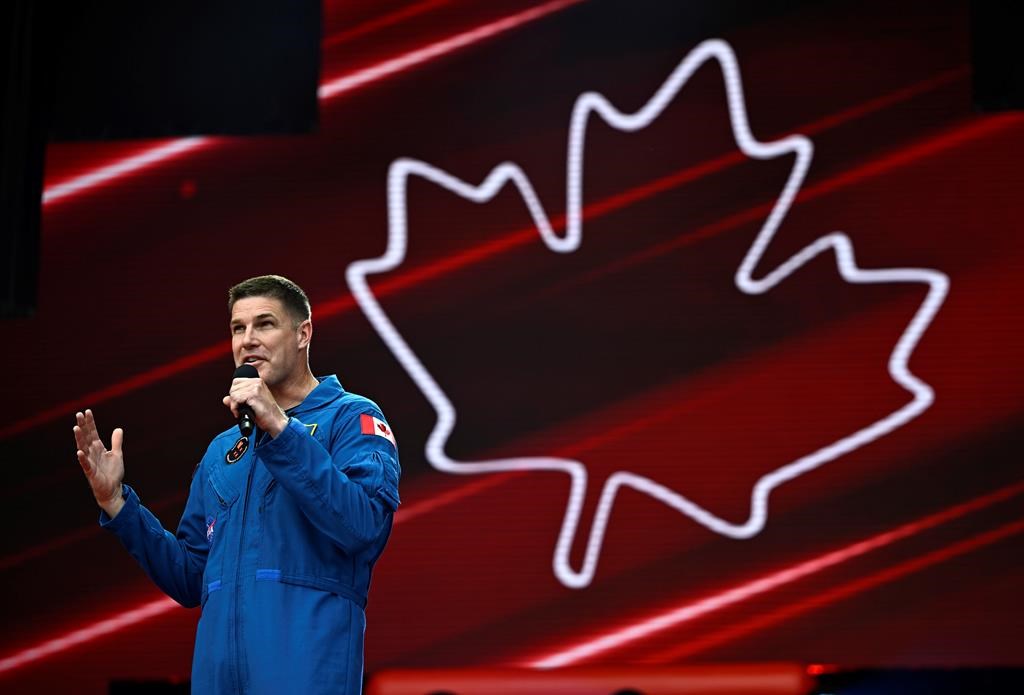Canada
Astronaut headed to the moon says Canada needs more visionaries

You’re in a Florida beach house. You’re under quarantine. And you’re saying your final goodbyes to your family.
That’s all mandated by your bosses, because they’re about to send you on a mission you might never return from.
Why on Earth would you say yes to that?
It’s something Jeremy Hansen has been asking himself as he prepares to go on a mission around the moon.
The Canadian astronaut says he finds his answers in the paths of those who came before him and helped earn the country its seat at the space exploration table.
He’s set to be a trailblazer himself, heading to deep space on NASA’s Artemis II mission, humanity’s first visit to the moon since 1972.
“It strings all the way back to decisions that were made in the 1960s in Canada where people started to have a vision of how Canada could leverage space to improve lives on the planet,” Hansen said in a recent interview with The Canadian Press.
Canada has been invited to become the second country in the world to send a human into deep space.
That’s a phrase Hansen, a self-professed science fiction aficionado, repeated twice. It’s worth it, he said.
“How did that happen? Visionaries. That’s how it happened and it’s worked over decades to get here.”
He’s the only Canadian on the crewed mission that aims to fly around the moon in September 2025. The others are Americans.
One of them is Reid Wiseman, whom Hansen has known since 2009 because they were in the same astronaut class at NASA. The others are Victor Glover and Christina Hammock Koch, who came up in the class after them.
“I feel like I’ve known this crew a long time so we’re kind of past those sort of initial phases of a relationship,” Hansen said.
They don’t think much about their differences in nationality, he said, viewing each other as friends rather than foreigners.
NASA and the Canada Space Agency have jointly sent astronauts into space since 1982. But it’s not a given that the Canadians will hang on to their current stature as humanity eyes Mars.
“If Canada is going to continue to be a meaningful partner in those endeavours, we’re gonna have to continue to make visionary and very strategic investments,” Hansen said.
“And really inspire ourselves and remind ourselves that we are capable of doing these extraordinary things and not sell ourselves short.”
It hasn’t always been easy for Canadians in the astronaut class to establish themselves among their American peers, Hansen said, though he describes himself as “very integrated.”
When Marc Garneau became the first Canadian to fly to space, he reportedly beat out American astronauts who had waited over a decade for that chance.
In an interview with the Globe and Mail newspaper in 2002, Garneau said he felt “eyes burning through my back” when he walked down the halls at NASA.
“I felt I should keep a low profile because some of these people are probably resentful of the fact that, having been selected less than a year before, I flew 10 months later. That was viewed as parachuting by the professional astronauts,” he told the newspaper.
Hansen said he sees himself standing on the shoulders of giants like Garneau.
“Those prior astronauts have really built a good reputation for us. So when I showed up, I felt like all that stuff was already behind us, all those growing pains,” Hansen said.
When it came to the Americans, he added, “although we have different cultures we have just figured out how to work together.”
Creating a culture around good communication is the biggest task ahead for the Artemis II crew, Hansen said.
That includes intentionally carving out time to talk about failures, luck and possibly meeting their end on the dark side of the moon as they perform a figure-eight manoeuvre.
The astronauts often navigate complex conversations around how to mitigate different risks that could lead to the loss of the crew — “but also acknowledging you will never get the risk down to zero.”
This month, Hansen said, there will be a stressful training course that involves “bobbing around the Pacific Ocean.”
It is intended to be a simulation of their capsule being plucked out of the Pacific by the U.S. Navy, as will happen at the end of their eight-day mission — if all goes to plan.
“I think that the realizations will definitely hit me in the days leading up to launch when I’m saying goodbye to my family, when I’m making sure all my affairs are in order,” Hansen said.
“Before I go, it’ll definitely be some moments of fear.”
This report by The Canadian Press was first published Feb. 17, 2024.
— With files from the Associated Press.
